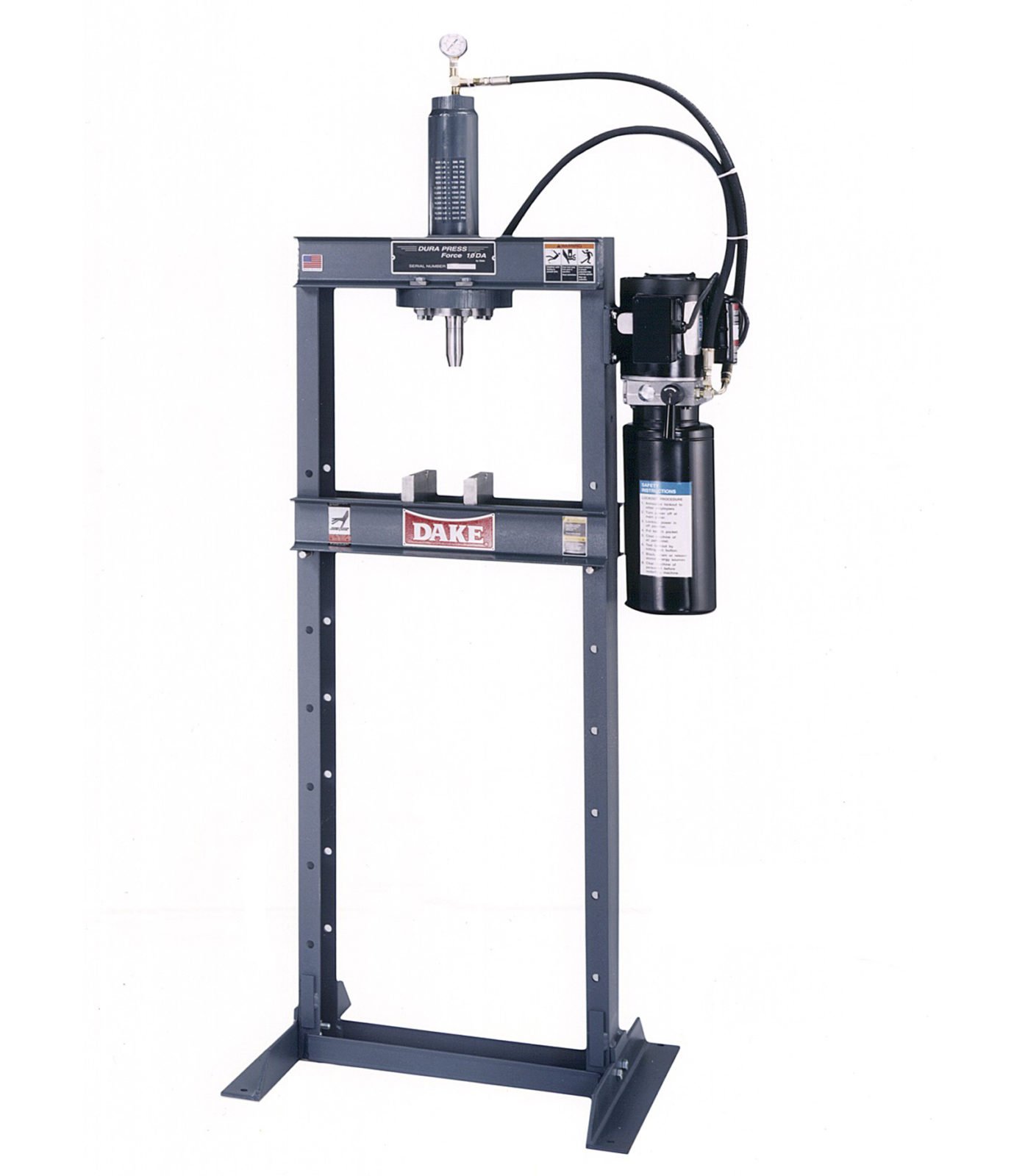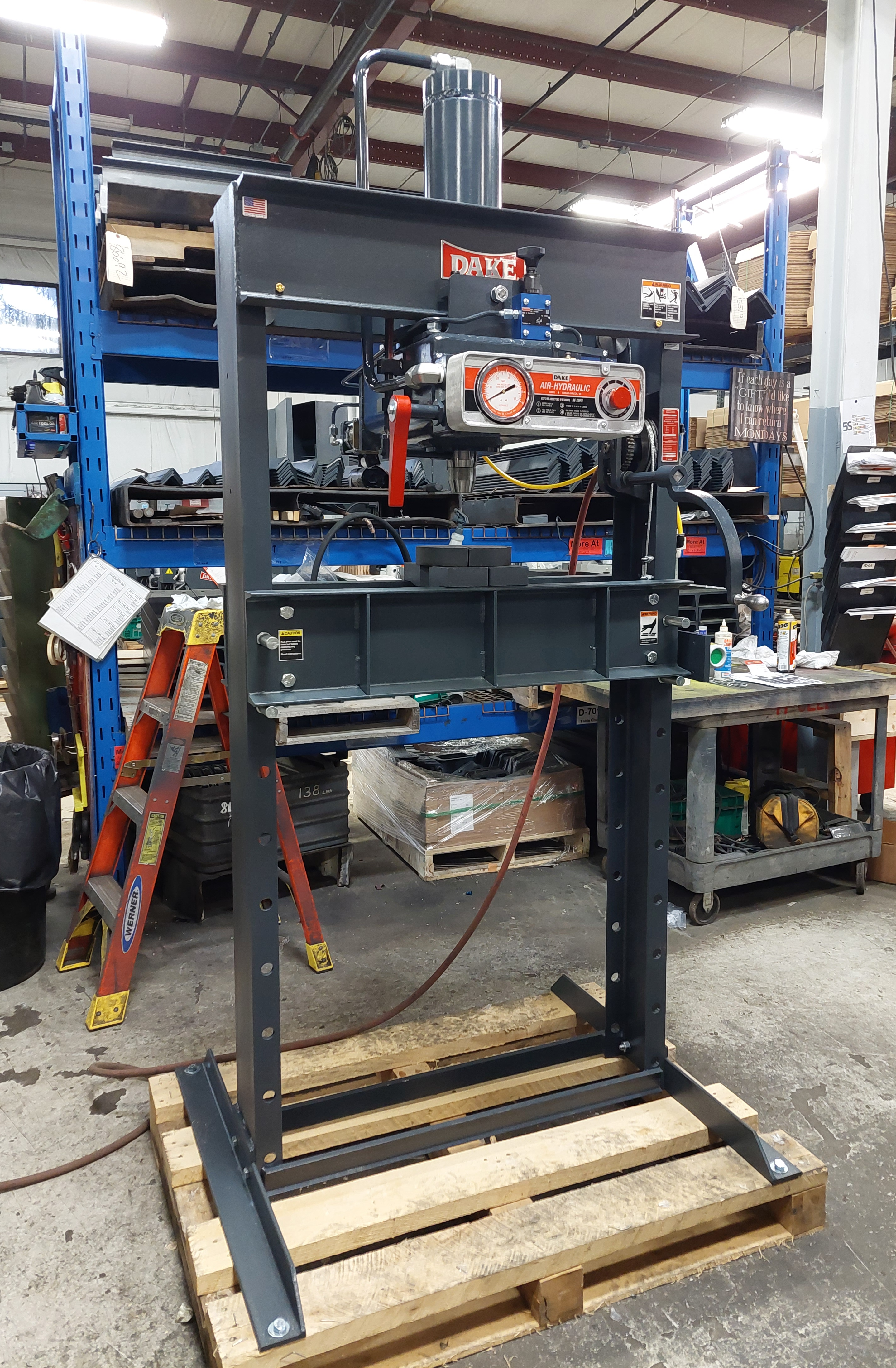In the midst of the current global health crisis, most of the country has been urged to shelter-in-place until the COVID-19 outbreak is brought under control. With many businesses shutting their doors, for the time being, many people have found themselves 'stuck' at home.
This is the perfect chance to begin learning a new skill like metalworking. It may sound like a difficult skill to master, but it’s actually quite easy to get started.
You don’t need to have decades of experience to begin your first metalworking project. In this post, our experts here at Dake will take you through a few ideas for easy DIY metalworking projects that you can do from home while sheltering-in-place.
One more thing before we move on to the good stuff: When operating heavy-duty tools, it’s important to remember safety first.
The Occupational Safety and Health Administration (OSHA) on the Machine Accident’s website outlines a list of dos and don’ts to reduce the risk of metalworking accidents.
Project #1 - Design a Ring
One of the easiest metalworking projects that beginners can start with is crafting a ring.
It doesn’t require many tools or very much material. If you already have a little bit of experience with metalworking, it’s a great project to help you hone your smoothing and bending skills.
What You Need:
- 4″ strip of paper
- Pen
- Scissors
- 8-gauge half-round sterling silver wire
- Jeweler saw with 4/0 blades
- Flat-nose pliers
- Medium tooth (#2) file
- Torch with firing brick
- Sandpaper
- Medium solder with pick
- Flux and brush
- Pot of hot pickle
- Tongs
- Bowl filled with water
- Mallet
- Steel-ring mandrel
Instructions:
Step 1 - Wrap the strip of paper around one of your fingers and mark off the length with a pen. Cut the paper with scissors to the appropriate length. This will serve as a guide for the length of your wire.
Step 2 - Lubricate the 4/0 saw blade and use the jeweler’s saw to create marks on your wire of choice. In this project, we used 8-gauge half-round sterling silver. Make sure that you saw in a fluid, smooth motion for the best cut. We don’t recommend using a wire cutter because the result will not be flat ends.
Step 3 - File the ends of your wire so that they will match up seamlessly. Also, file a small portion of the interior side of the wire for soldering later.
Step 4 - Now it’s time to shape the ring. Using the flat-nose pliers, curve the wire into an oval shape. It doesn’t have to be perfect, but the two ends need to match up.
Step 5 - Before you go any further, slip the ring onto your finger to ensure that it is still the correct size.
Step 6 - Now that you’re happy with the fit, drop the ring into the hot pickle bath, and let it sit for a few minutes. This process cleans the ring. While it’s taking a pickle bath, sand the end of the solder wire a bit.
Then, cut off a 1mm snippet and stick it to the solder on the firing brick. Use a solder pick for this, not your fingers. Next, remove the ring form the pickle with tongs. Rinse it, and allow it to completely dry. Do not touch the ring with your fingers.
Step 7 - Grasp the clean ring with the tongs and paint it with flux. Next, place it on the firing brick with the seam directly on the solder wire.
Step 8 - Get your torch fired up with a low flame. The blue cone should be about 1/4-inch away from the surface, and you should keep it moving continuously. Slowly heat the brick around your ring. With each pass of the torch, get closer and closer.
Step 9 - Once the flux turns white and begins to bubble, that’s your notification that the ring is at 400-degrees Fahrenheit. You can begin to speed up the torching process.
Step 10 - When the flux turns glassy and clear, you have reached 1,100-degrees Fahrenheit. This indicates that the solder is melting. Once you see a silver line, the melted solder will slide into the seam. Immediately stop the torching process.
Step 11 - Do not touch the ring. Use tongs or tweezers to grasp the hot metal and drop into a bowl of water. Then, move it to the pickle pot once more.
Step 12 - Now that you’ve completed the soldering, quenching, and bathing processes, remove the ring from the pickle pot with tongs. Rinse it off and let it dry.
Step 13 - Next, place the ring into a steel-ring mandrel and hammer it with a mallet. As you nag away, the ring with turn inside the mandrel. After your hammer all the way around the ring, it will be perfectly round instead of oval-shaped.
Step 14 - At this point, you can add whatever kind of texture you want. You may also choose to polish the ring with a rotary tool of your choice.
Other Easy DIY Projects
If you have a bit more experience with metalworking, here are a few other DIY projects you can undertake while sheltering-in-place.
Coat Racks
For this home improvement project, you will need an angle grinder to cut individual pieces to weld together. You will also need an arc welder and welding mask to do the welding.
There are endless possibilities with this project depending on your personal style.
A Grille
A great introduction to meticulous metalworking is to undertake a grille project. While this isn’t the entire barbecue pit, it is a grated platform on which to place food items for cooking.
For this, you will need strong metal strips that are all the same thickness, an arc welder, a welding mask, and an angle grinder.
A Wagon
If you want to combine the fun of woodworking and metalworking together to build something extraordinary for your children, you can create a handmade wagon. This is more of an advanced project that requires metal-shaping skills or pre-shaped metal pieces.
Talk to Us
If you are interested in learning more about the art of metalworking or you wish to upgrade your workshop with some amazing tools, get in touch with our experts here at Dake.

.jpg)

